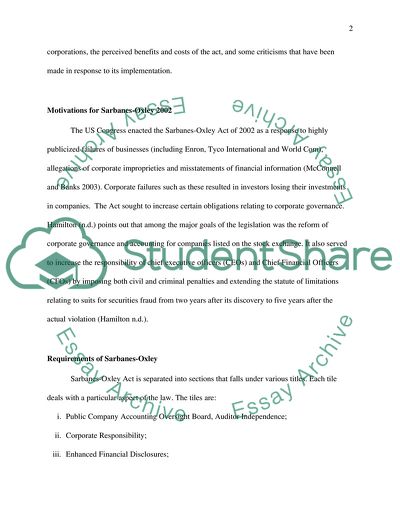Cite this document
(The US Federal Law - Sarbanes-Oxley Act 2002 Research Paper, n.d.)
The US Federal Law - Sarbanes-Oxley Act 2002 Research Paper. Retrieved from https://studentshare.org/law/1755022-sarbanesoxley-act-of-2002
The US Federal Law - Sarbanes-Oxley Act 2002 Research Paper. Retrieved from https://studentshare.org/law/1755022-sarbanesoxley-act-of-2002
(The US Federal Law - Sarbanes-Oxley Act 2002 Research Paper)
The US Federal Law - Sarbanes-Oxley Act 2002 Research Paper. https://studentshare.org/law/1755022-sarbanesoxley-act-of-2002.
The US Federal Law - Sarbanes-Oxley Act 2002 Research Paper. https://studentshare.org/law/1755022-sarbanesoxley-act-of-2002.
“The US Federal Law - Sarbanes-Oxley Act 2002 Research Paper”, n.d. https://studentshare.org/law/1755022-sarbanesoxley-act-of-2002.


